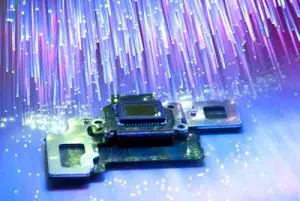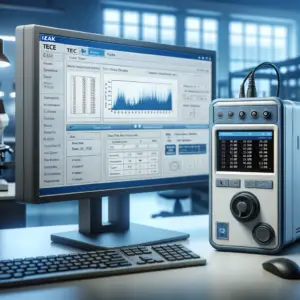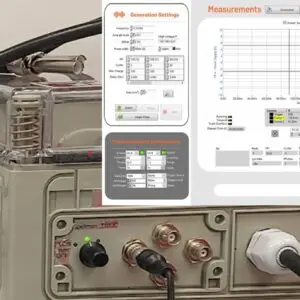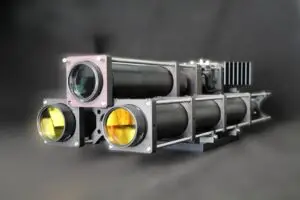In today’s market, choosing the optical detector you need can be challenging. With so many different varieties of electro-optical setup, how does one choose the correct variety with so many options available? So many factors need to be considered, including sensitivity, wavelength and power, responsivity, not to mention the application. The applications can involve recording a certain amount of light or delivering very targeted readings, even down to the single photon.
The categories of optical detector include:
Photodiodes of the PIN variety
- CCDs
- Avalanche
- Photomultipliers
- Photoresistors
- Photoconductors
In general, these all work on the same basic principle, that of the photoelectric effect. If a photon of light has more energy than the material in question’s threshold or energy of activation, it is absorbed and made into a free electron that can be measured just like other sources of current.
Detectors
A photodiode consists of a p-n junction or a p-i-n junction diode with a reverse bias to its operation. This produces a linearly proportional current to the illuminance of the area. Often a photodiode is packaged with a transimpedance amplifier that uses unity gain so that the output voltage is proportionate. This can be used for position or motion sensing, photography, detection in medicine and in communications.
Silicon photodiode detectors are versatile in numerous types of situations. Since silicon can be used on wavelengths from ultraviolet to near infrared in the range of 300 nm to 1100 nm, this is good for many types of wavelength bands. This can also be used to identify digitized or analog signals. Using Ge or InP photodiodes can detect basic infrared, InGaAs for SWIR range or InSb for MWIR range.
Fiber optic communications tend to involve a photodiode of the PIN or avalanche variety. Often, these are for local area networks or LAN applications. Higher sensitivity needs such as with lower power lasers or long haul fiber communications applications, avalanche photodiodes are the best option. With this type of detector, low optical power can be amplified considerably for a strong signal.
Photoresistance detection
Photoresistance is another method of optical detection. This resistance lessens with more incident light intensity. Due to the low cost of these photoresistors, light meters and street lamps often involve them for applications like illumination based activation and deactivation.
Charge coupling
An image can be captured using a CCD or charge coupled device, which uses pixels individually as independent potential wells, and each fills with electrons when light is around through photocapacitance. With many CCD modules that use between 5 and 10 million pixels, there is tremendous room to detect. It is vital to note that the dimension of array affects the speed of transfer from it into memory. As well, for higher power coherents such as lasers, neutral density filters are important to put between the source and the CCD.
Other types
A photomultiplier or a PMT (photomultiplier tube) is a form of vacuum tube. This uses a photocathode that releases electrons when light impacts against it, and the dynodes multiply these electrons through secondary emissions. This output can be far more energized than the initial light source, which makes a PMT detector a low noise and very high amplification detector. This can be used for astronomy and medicine, where such precision is vital.
Optical transistors have a photodiode instead of a regular diode in the gate. This gate opens, and the transistor is in an active operation as light impacts the photodiode itself. Often, this is used for optical coupling when a circuit requires isolation from sources of electricity.
Nanotechnology is a new field, but optical detectors have already felt its emergence. Quantum dot detectors are the first wave in development of cell imaging and quantum computing, though mainstream optics are not yet integrated in this way.
The following “cheat sheet” should be helpful to quickly ascertain your needs.
Optical Detector for each application Application Optical Detector Electrical isolation Optical transistor Low optical power Photomultiplier or Avalanche photodiode Intensity measurements with voltage output Photodiode with transimpedance amplifier Broad UV to NIR spectrum detection Silicon photodiode Precise UV to NIR spectrum, short pulses Silicon photodiode Fiber optic communications Photodiode Fiber optic communications – long haul Avalanche photodiode High power, NIR band Ge Photodiode Higher accuracy, NIR band InGaAs or InSb photodiode Less noise, optimum gain detection Photomultiplier (PMT) We can help you to find precisely what sort of photodetectors you need.
Tzachi Sabati
CEO, IZAK Scientific
Physicist specializing in photonics and quantum technologies, with deep expertise in quantum sensors and advanced optical systems. Leads the Advanced Quantum Lab course at the Technion, bridging academic excellence with industry innovation. At IZAK Scientific, provides cutting-edge photonics-based solutions, developing customized inspection and sensing systems for R&D and production. Passionate about advancing quantum sensing applications and integrating novel technologies to meet industry needs.



































